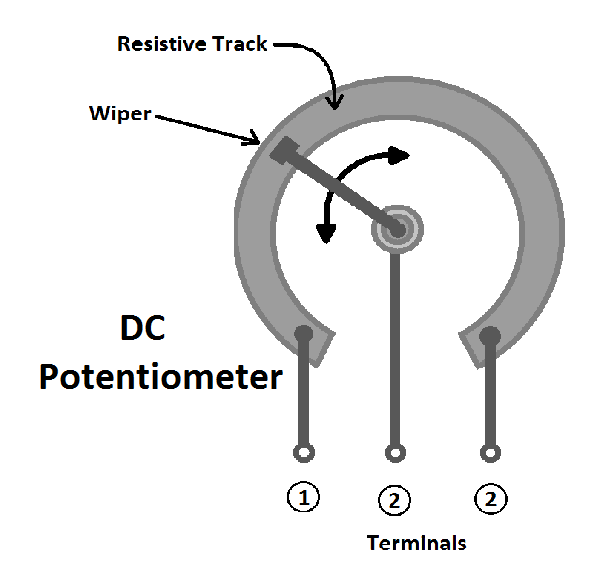Difference between AC and DC Potentiometer
The main difference between an AC and DC potentiometer is that the DC potentiometer is able to measure the magnitude or voltage of an unknown power source whereas the AC potentiometer is able to measure both the magnitude and phase of the voltage from the unknown power source with the help of a reference.
There is some constructional difference between an AC potentiometer and a DC potentiometer. For example, in a DC potentiometer, only a resistor is used to divide the voltage or to make the voltage drop whereas, in an AC potentiometer, a resistor, inductor, and capacitor are used to divide the voltage or make the voltage drop.
We know that DC is a constant power supply and there is no frequency. When we connect an Inductor or capacitor to a DC power supply, the inductor will completely allow and the capacitor will completely block the power supply. So if we use an inductor or capacitor in a DC potentiometer it will not give any result. But when we connect the inductor or capacitor to an AC power supply the blocking and allowing property depends upon the frequency and their reactive property. So if we use an inductor or capacitor in an AC potentiometer it will give the proper result. That is why inductors and capacitors are also used in AC potentiometers.
DC Potentiometer
DC potentiometer is basically a three-terminal resistor with a sliding or rotating contact on the resistive element or wire or path. If only two terminal is used then it can be used as a variable resistor. There are two types of DC potentiometers such as Sotary type and the Sliding type. The rotary type has a cylindrical structure of resistive elements on which the slider or wiper moves. On the other hand, the sliding-type potentiometer has a flat resistive on which the slider or wiper moves.
DC Potentiometer is helpful to divide or measure the DC voltages. Generally, the power supply is applied across the two terminals of the resistive element. And the output is taken from the terminal that is connected to the movable contact and any one terminal of the resistive element. Now when we move the sliding contact the output voltage will be varied.
There are huge applications of DC Potentiometers in electrical and electronic devices such as voltage control in power and lighting circuits and volume control on audio equipment. Even they are used as position transducers also.
AC Potentiometer
As we know the AC potentiometer is able to measure both magnitude and phase angle so it has a different construction than the DC potentiometer. According to the construction, there are two types of AC Potentiometers - Polar Type Potentiometer and Coordinate Type Potentiometer.
The polar types potentiometer is built with a phase-shifting transformer, a DC potentiometer, and an electrodynamometer-type ammeter. On the other hand, the coordinate-type potentiometer is built by the caging of two separate potentiometers. One of them is called an in-phase potentiometer which is used to measure the in-phase factor of the unknown voltage whereas the other one is called a quadrature potentiometer, which is used to measure the quadrature part of the unknown voltage.
AC potentiometers also have some useful applications such as self-inductance measurement, and calibration of voltmeters, ammeters, and wattmeters.
Read Also:
Difference between AC and DC Potentiometer
 Reviewed by Author
on
December 12, 2022
Rating:
Reviewed by Author
on
December 12, 2022
Rating:
 Reviewed by Author
on
December 12, 2022
Rating:
Reviewed by Author
on
December 12, 2022
Rating:


